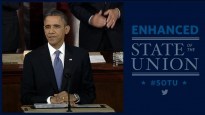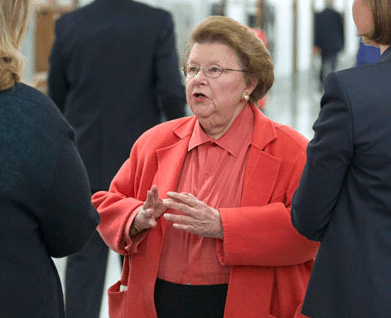Women & Work
How Women Lead: Not A Hero, Everyone as Hero

I recently had the pleasure of meeting Arizona State University student Lauren Sandground at a meeting to plan the Take The Lead Challenge Launch event (happening February 19 at ASU—check it out here and plan to be there live or by livestream). Lauren, a senior, started an organization named Woman as Hero in 2009 after being surprised to encounter gender biases in her own life even today, when young women are told they can do or be anything.
28 to 40: Danger Zone Keeping Women from Leadership Parity

Opportunity Now is conducting an online survey on the gender gap. They are calling on women to share their work experiences and life goals in an attempt to unravel the problem of why women see their careers stall in their 30s.
Mind the Gap: Liz O’Donnell’s New Book on Moms in America
 Feminists and economists alike have been buzzing about the latest data released from the U.S. Census Bureau that shows the gender-based wage gap has remained virtually the same for the past decade. Women earn, on average, just .77 cents for every dollar a man earns. And for women of color the gap is even greater.
Feminists and economists alike have been buzzing about the latest data released from the U.S. Census Bureau that shows the gender-based wage gap has remained virtually the same for the past decade. Women earn, on average, just .77 cents for every dollar a man earns. And for women of color the gap is even greater.
But another gender-based gap is worth talking about too – the housework gap. This gap has a direct and negative correlation to the wage gap.
Read MoreValerie’s Story: How Intention and Power Tool #3 Landed a Big Promotion
“Sometimes feedback on the tangible results of leadership training is hard to come by because they may be indirect or hard to attribute to the training itself. This true story, however, is different. There is a direct line between what I taught and what happened. Read my Q and A with Valerie Brown and cheer her with me.”

Mothers or Others? Why Choose? How Maternity Leave Policy Crushes Women’s Leadership Parity
 Jamera Lee Massop was an administrative assistant in New York when she became pregnant. She didn’t think being pregnant would or should impact her job. However, with no reason other than “your contract says we can terminate you at any time for any reason,” Jamera’s company fired her when she was six months pregnant.
Jamera Lee Massop was an administrative assistant in New York when she became pregnant. She didn’t think being pregnant would or should impact her job. However, with no reason other than “your contract says we can terminate you at any time for any reason,” Jamera’s company fired her when she was six months pregnant.
Adventures of Gloria Feldt, Co-founder and President Take The Lead
 Afi Ofori of Zars Media invited me to write about my career journey and kindly let me repost it here for you.
Afi Ofori of Zars Media invited me to write about my career journey and kindly let me repost it here for you.
Hi everyone, I’m Gloria Feldt, co-founder and president of Take The Lead, a new nonprofit organization whose mission is to prepare, develop, inspire and propel women to take their fair and equal share of leadership positions across all sectors by 2025. I’m also an author and public speaker, and former president and CEO of Planned Parenthood Federation of America.
I got into this role out of my passion for equality for all, and in particular for women to get a fair shake. That passion has taken several forms. Take The Lead is the most recent incarnation. It began in 2008, when I discovered while researching an article on women in politics for Elle Magazine that the barriers to women in leadership — whether in the workplace, in civic life and politics, or in personal life — now have as much to do with our own ambivalence toward power as with external barriers.
I know from my own life that this can be a painful issue, so I wanted to inspire, not blame women, and to give them practical tools and tips to help them on their journey forward.
Read MoreWomen’s History Month: Why Sally Jewell as Secretary of the Interior Could be a Historic Win
Sally Jewell is a one-woman powerhouse. The REI CEO has just been approved by a bipartisan United States Senate Energy and Natural Resources Committee by a vote of 19-3, according to the New York Times. Her next stop—a full review by the U.S. Senate.
“She is going to give each member of this committee her ear and her expertise that comes from having managed to pack a host of professional careers – petroleum engineer, C.E.O. and banker, to name just a few – into just one lifetime,” Senator Ron Wyden, Democrat of Oregon, told the committee.
Jewell’s diverse experience has made her a unique contender for the job. In comparison to her possible predecessor, former Senator Ken Salazar, Jewell has no government experience. However, just as Salazar made a historic impact by becoming one of the first Hispanics to earn a spot in the Senate, Jewell’s confirmation would make her the second woman to hold the Interior Secretary position.
An avid environmentalist these days, Jewell, 56, is not afraid to say that she started off as a petroleum engineer for Mobil Oil. Her range of experience provides her with a widened perspective. She has worked as a foreman for drill crews, an investment banker, and is now the CEO of a highly successful outdoor sports corporation. She’s a Jane of all trades—a banker, a boardroom member, and a mountain climber. She takes heed to both economic fronts and conservation efforts.
“She knows the link between conservation and good jobs,” President Obama said during Jewell’s nomination earlier this month. “She knows that there is no contradiction between being good stewards of the land and our economic progress.”
Read MoreMy 5 Fave Parts of Obama’s 2013 State of the Union Address
The yoga class I took just before last night’s State of the Union (SOTU) address wiped me out. I fell asleep immediately afterward. Which is good because I had a chance to think overnight about the parts that resonated most with me.

I’ve been tough on the president in the past, disappointed with his timidity and unwillingness to set a big bold agenda.
The other good thing about writing the day after is that others have fact checked. And the de rigeur liberal critique as well as Sen. Ted Cruz’s (R-TX) really awful other-party rebuttal have been duly hashed and rehashed.
With the benefit of reflection, here are my three favorite parts of the speech.
Read MoreThe Young Politica: Why the Paycheck Fairness Act Will Narrow the Wage Gap
Last week, Sen. Barbara Mikulski (D-MD) introduced the Paycheck Fairness Act, which would allow employees to discuss their salary information without the fear of companies pursuing legal action against them.
The bill is on its third try. In a 2010 senate vote, the bill failed to get any Republican support, even by the female Republican Senators Susan Collins (R-ME), Kay Bailey Hutchinson (R-TX) and Olympia Snowe (R-ME), who all voted for the Lilly Ledbetter Act.
According to Senator Tom Harkin (D-IA), the Fair Pay Act will:
• Amend the Fair Labor Standards Act of 1938 to prohibit discrimination in the payment of wages on the basis of sex, race or national origin;
• Require employers to provide equal pay for jobs that are comparable in skill, effort, responsibility and working conditions;
• Prohibit companies from reducing other employees’ wages to achieve pay equity;
• Require public disclosure of employer job categories and pay scales, without requiring specific information on individual employees; and
• Allow payment of different wages under a seniority system, merit system, or system that measures earnings by quantity or quality of production.
The bill makes perfect sense—give all female workers a chance to see what their equal male counterparts are earning, and see if it matches up without getting sued by employers. In an economy where women earn some 33% less than males, why wouldn’t politicians see this as a good measure for ensuring equal rights?
Read MoreThe Young Politica: How Increasing Girls in STEM Programs Can Improve the Nation
In your junior high science classes, how many female scientific pioneers were in your textbook? I doubt more that there were more than a handful. In freshmen geometry class, did you learn about any famous female mathematicians? Probably not. I did not know about Sally Ride until I graduated from high school and even today, I could not tell you about any legendary female mathematicians. Pioneering women have been historically absent from all school subjects, not just science and mathematics, since the dawn of the schoolhouse.
Even these days, when more women are going to college than men in this country, there is still a lack of women entering science, technology, engineering, and math (STEM) career fields. The reasons for the interest gap are complicated, according to Christi Corbett, senior researcher for for the American Association of University of Women.
“The direction of scientific inquiry is influenced by the people doing the work,” Corbett told me over the phone. Women comprise of about only 20% of the bachelor’s degrees in STEM-related fields. One can concur that women must then only make about 20% of the decisions in, say, scientific research.
Corbett helped compile Why So Few?—a comprehensive report that tries to solve why so few women are entering STEM fields.
Read More